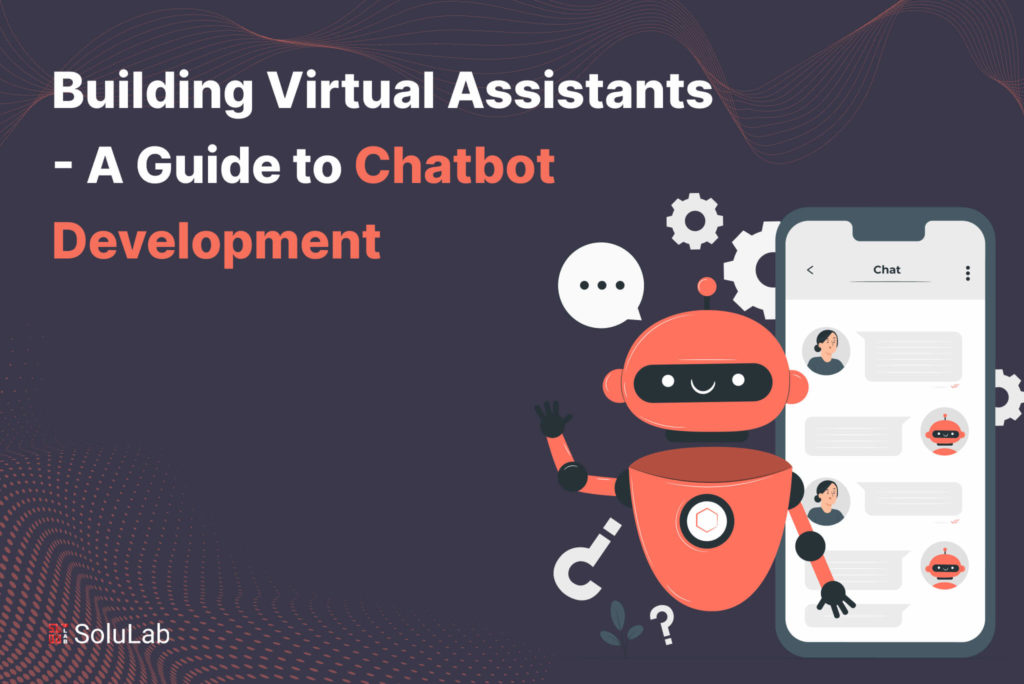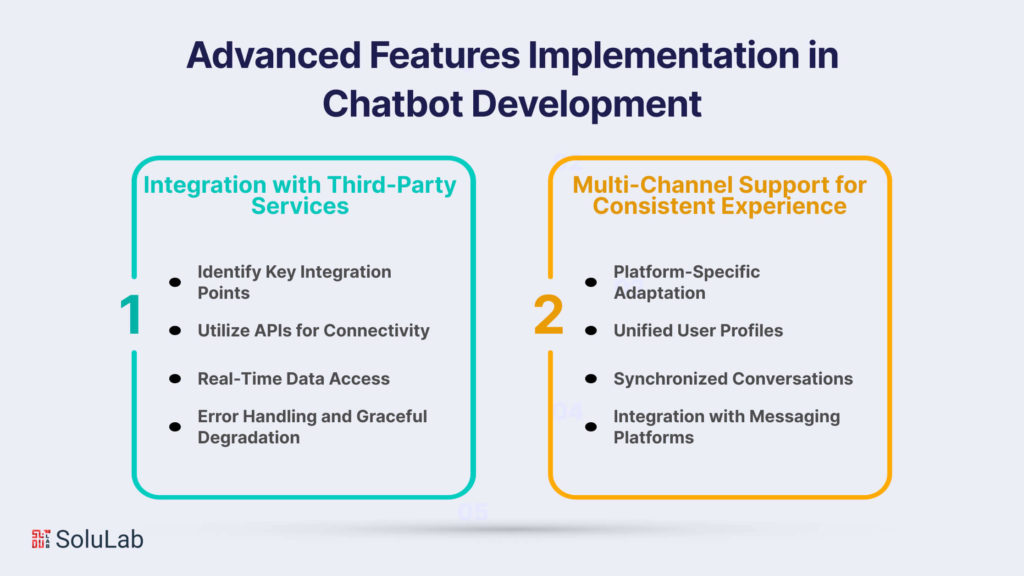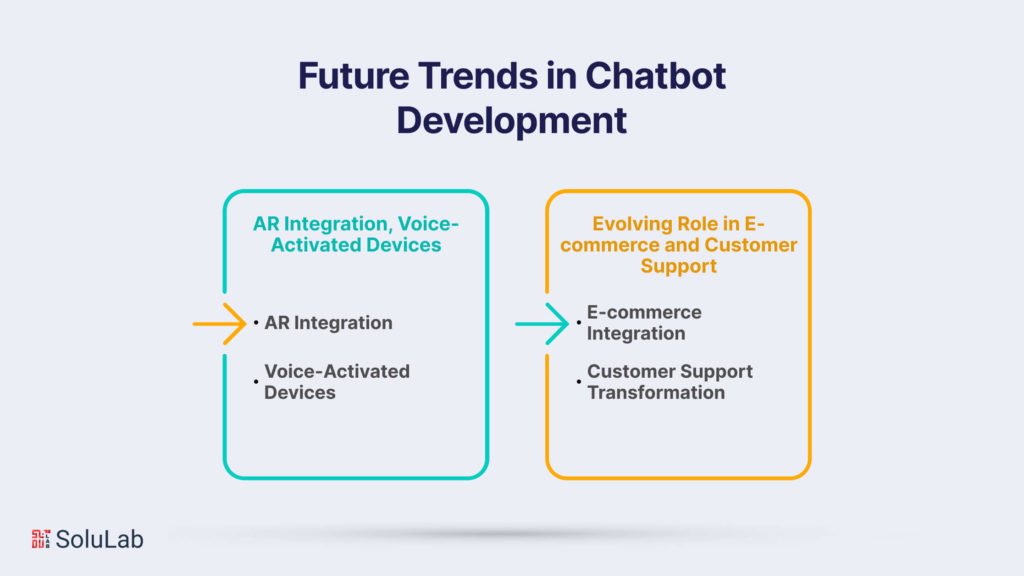
In the era of digital transformation, businesses are constantly seeking innovative ways to enhance customer interactions, streamline processes, and boost productivity. One such technology that has gained prominence is Chatbot Development. AI-powered chatbots, often referred to as Intelligent Virtual Assistants, have become integral components of modern business strategies. In this comprehensive guide, we will delve into the world of Chatbot Development, exploring key concepts, strategies, and best practices to build intelligent virtual assistants that deliver meaningful value.
Understanding the Landscape: Chatbot Development and AI Integration
Chatbots are artificial conversational tools designed to simulate human-like interactions. They have evolved from basic rule-based systems to sophisticated AI-powered models capable of natural language processing (NLP) and machine learning (ML).
The Evolution of Chatbots
The roots of chatbots can be traced back to the early days of computing when simple rule-based systems governed interactions. These early chatbots followed predefined scripts, responding to specific keywords or phrases. Over time, advancements in Artificial Intelligence (AI), particularly in the realms of Natural Language Processing (NLP) and Machine Learning (ML), have propelled chatbots into a new era of sophistication.
Rule-Based vs. AI-Powered Chatbots
Traditional rule-based chatbots operate within the constraints of predefined rules and scripts. While effective for straightforward tasks, they often fall short in handling nuanced conversations or adapting to changing user needs. The advent of AI-powered chatbots marked a paradigm shift. These intelligent virtual assistants leverage NLP to understand the intricacies of human language, enabling them to interpret user intent, context, and sentiment.
Key Components of Chatbot Functionality
-
Natural Language Processing (NLP):
NLP forms the bedrock of chatbot intelligence. It enables chatbots to comprehend and interpret human language, breaking down user queries to discern intent and extract relevant information. As NLP algorithms evolve, chatbots become increasingly adept at understanding context, leading to more natural and contextually relevant conversations.
-
Machine Learning (ML):
Machine Learning empowers chatbots to go beyond static rule sets. ML algorithms allow chatbots to learn from user interactions, adapting and improving their responses over time. This continuous learning loop enhances the chatbot’s ability to handle a wide range of queries and provide personalized experiences.
Applications of Chatbots

-
Customer Service:
Chatbots are widely employed in customer service to provide instant responses to frequently asked questions, troubleshoot issues, and guide users through processes. This not only improves customer satisfaction but also frees up human agents for more complex tasks.
-
E-commerce:
In the realm of e-commerce, chatbots facilitate seamless shopping experiences. They assist users in finding products, offer personalized recommendations, and even handle the checkout process, streamlining the customer journey.
-
Healthcare:
Chatbots play a crucial role in the healthcare sector, offering virtual assistance for symptom checking, medication reminders, and general health inquiries. They contribute to improved accessibility and health awareness.
-
Enterprise Operations:
Within enterprises, chatbots are deployed to automate routine tasks, assist employees with internal queries, and enhance collaboration. They serve as digital assistants, boosting efficiency and productivity.
Advanced Features Implementation in Chatbot Development

In the rapidly evolving landscape of chatbot development, integrating advanced features is paramount to providing a seamless and sophisticated user experience. Two crucial aspects of this advancement are the integration with third-party services and ensuring multi-channel support for a consistent user experience.
A. Integration with Third-Party Services
One of the hallmarks of a robust chatbot is its ability to seamlessly integrate with third-party services. This feature expands the bot’s capabilities beyond predefined responses, allowing it to access external data and perform tasks that enhance user interactions. Here’s how you can effectively implement integration with third-party services:
1. Identify Key Integration Points:
Define the specific functionalities and data sources from third-party services that align with your chatbot’s objectives. This could include integrating with CRM systems, payment gateways, or external databases.
2. Utilize APIs for Connectivity:
Leverage Application Programming Interfaces (APIs) to establish connectivity between your chatbot and external services. Ensure that the APIs used are secure, well-documented, and capable of handling the expected data volume.
3. Real-Time Data Access:
Enable real-time data access to ensure that the information provided by the chatbot is up-to-date. This is particularly crucial for applications such as e-commerce transactions, where real-time inventory and pricing information are essential.
4. Error Handling and Graceful Degradation:
Implement robust error handling mechanisms to manage situations where third-party services may be temporarily unavailable. Additionally, design the chatbot to gracefully degrade its functionality if certain integrations are not accessible, ensuring a consistent user experience.
B. Multi-Channel Support for Consistent Experience
Modern users interact with brands across various channels, necessitating a chatbot that provides a consistent and cohesive experience irrespective of the platform. Implementing multi-channel support ensures that users can seamlessly transition between different touchpoints while maintaining continuity in their interactions.
1. Platform-Specific Adaptation:
Customize the chatbot’s interface and interaction style based on the specific characteristics of each channel. For example, interactions on a website might differ from those on a social media platform, considering the varying user expectations and interface designs.
2. Unified User Profiles:
Implement a unified user profile system that consolidates user data from different channels. This allows the chatbot to recognize users across platforms, providing a personalized experience based on their historical interactions and preferences.
3. Synchronized Conversations:
Enable synchronized conversations, allowing users to seamlessly switch between channels without losing context. This is particularly important for complex interactions where users may initiate a conversation on one channel and continue it on another.
4. Integration with Messaging Platforms:
If deploying a chatbot on messaging platforms like Facebook Messenger or WhatsApp, ensure seamless integration. Leverage platform-specific features such as quick replies and rich media to enhance the user experience within these channels.
In conclusion, the successful implementation of advanced features, such as integration with third-party services and multi-channel support, is pivotal in elevating the capabilities of your chatbot. By strategically incorporating these elements, you not only enhance the functionality and versatility of your chatbot but also provide users with a consistent and engaging experience across various touchpoints.
Strategies for Effective Chatbot Development

Effective chatbot development involves a combination of technical prowess, user-centric design, and a commitment to continuous improvement. Here, we delve into detailed strategies to guide your chatbot development process:
1. Define Clear Objectives:
Start by establishing clear objectives for your chatbot. Identify the specific tasks it will perform, whether it’s answering customer queries, providing product information, or facilitating transactions. Clearly defined goals will guide the development process and ensure the chatbot meets user expectations.
2. Understand Your Audience:
Conduct comprehensive audience research to understand the demographics, preferences, and communication styles of your target users. This information is crucial for tailoring the chatbot’s language, tone, and functionality to align with user expectations.
3. Data Collection and Integration:
Implement robust data collection mechanisms to gather valuable insights into user behavior and preferences. Integrate your chatbot with existing databases and systems to access real-time data, ensuring that the information provided is accurate and up-to-date.
4. Natural Language Processing (NLP):
Leverage advanced Natural Language Processing (NLP) techniques to enhance the chatbot’s ability to understand and respond to user queries in a natural and conversational manner. Regularly update the language model to stay current with linguistic trends and nuances.
5. User Feedback Loop:
Establish a continuous feedback loop by collecting user feedback and analyzing it systematically. Use this feedback to identify areas for improvement, address user concerns, and enhance the overall user experience. Regularly iterate on the chatbot based on user input.
6. Machine Learning for Personalization:
Implement machine learning algorithms to personalize user interactions. Analyze user data to predict preferences, offer tailored recommendations, and create a more engaging and personalized experience. This dynamic adaptation is key to keeping users actively engaged.
7. Multi-Channel Integration:
Ensure your chatbot is seamlessly integrated across various channels, including websites, mobile apps, and social media platforms. This multi-channel approach provides users with a consistent experience and expands the reach of your chatbot to meet users where they are.
8. Security and Privacy:
Prioritize data security and user privacy. Implement robust security protocols to protect user data and communicate these measures transparently to build trust. Stay informed about data protection regulations and ensure compliance to safeguard user information.
9.Continuous Testing and Optimization:
Establish a comprehensive testing strategy throughout the development lifecycle. Conduct usability testing, performance testing, and A/B testing to identify and address any issues. Regularly optimize the chatbot based on performance metrics and user feedback.
10. Scalability and Future-Proofing:
Design your chatbot with scalability in mind to accommodate future growth in user interactions. Stay abreast of emerging technologies and industry trends to future-proof your chatbot against evolving user expectations and technological advancements.
Measuring Performance in Chatbot Development
As the adage goes, “what gets measured gets managed.” In the realm of chatbot development, measuring performance is essential for ensuring the effectiveness of the bot and continually enhancing the user experience. This involves monitoring key performance indicators (KPIs) such as response time and user satisfaction, while also establishing user feedback loops for iterative improvement.
A. KPIs: Response Time, User Satisfaction
1. Response Time: Response time refers to the time it takes for the chatbot to generate and deliver a response to the user query.
- Measurement: Track the average response time and set benchmarks for acceptable levels based on the complexity of queries.
- Importance: Swift responses contribute to a positive user experience, enhancing user engagement and satisfaction.
2. User Satisfaction: User satisfaction gauges how content users are with their interactions with the chatbot.
- Measurement: Implement surveys or rating systems to collect direct feedback on user satisfaction. Analyze sentiment from user interactions for a more nuanced understanding.
- Importance: User satisfaction is a holistic metric that reflects the overall performance and user-friendliness of the chatbot.
B. User Feedback Loops for Iterative Improvement
1. Establishing Feedback Mechanisms:
- Methods: Implement user feedback mechanisms such as surveys, in-chat feedback options, or post-interaction email surveys.
- Frequency: Regularly prompt users for feedback after interactions or at key touchpoints.
2. Analyzing Feedback:
- Quantitative Analysis: Aggregate numerical ratings and quantitative feedback to identify trends and patterns.
- Qualitative Analysis: Pay attention to qualitative feedback for insights into specific pain points or areas of improvement.
3. Iterative Improvement:
- Continuous Iteration: Use feedback as a basis for iterative development. Regularly update the chatbot based on user suggestions and pain points identified through feedback.
- Prioritization: Prioritize feedback based on impact and feasibility, focusing on changes that will have the most significant positive effect on user satisfaction.
4. Adapting to User Preferences:
- Personalization: Leverage user feedback to personalize interactions. If users consistently request certain features, consider implementing them to enhance user engagement.
- User-Centric Design: Use feedback to inform the design process, ensuring that the chatbot aligns closely with user expectations and preferences.
Future Trends in Chatbot Development

The landscape of chatbot development is continuously evolving, driven by technological advancements and changing user expectations. Two prominent future trends shaping the trajectory of chatbots are the integration of Augmented Reality (AR) and Voice-Activated Devices, as well as their evolving role in E-commerce and Customer Support.
A. AR Integration, Voice-Activated Devices
1. AR Integration: Augmented Reality (AR) integration involves overlaying digital information, such as visuals or data, onto the real-world environment perceived through a device’s camera.
- Implementation: Chatbots will increasingly leverage AR to provide visual assistance. For instance, in retail, users might use a chatbot to virtually try on clothing items or visualize furniture in their living spaces.
- Benefits: AR-enhanced chatbots enhance user engagement by providing more immersive and interactive experiences. This is particularly valuable in industries like retail, education, and healthcare.
2. Voice-Activated Devices: The integration of chatbots with voice-activated devices allows users to interact with bots using voice commands.
- Implementation: Voice-activated chatbots are becoming prevalent in smart speakers, smartphones, and other IoT devices. Users can perform tasks, get information, or make requests through natural language voice interactions.
- Benefits: Voice-activated chatbots enhance accessibility and convenience. Users can engage with the chatbot hands-free, enabling seamless integration into daily activities.
B. Evolving Role in E-commerce and Customer Support
1. E-commerce Integration:
- Contextual Recommendations: Chatbots will play a crucial role in providing personalized product recommendations based on user preferences and behavior. This will enhance the overall shopping experience, making it more intuitive and tailored to individual needs.
- Conversational Commerce: Chatbots will facilitate conversational commerce, allowing users to make purchases directly within chat interfaces. Integration with payment gateways and inventory systems will streamline the transaction process.
2. Customer Support Transformation:
- Advanced Issue Resolution: Chatbots will evolve to handle more complex customer queries by leveraging advanced Natural Language Processing (NLP) and machine learning. This will reduce the workload on human agents, allowing them to focus on more intricate issues.
- Seamless Handovers: The integration of chatbots with human agents will become more seamless. Chatbots will intelligently recognize when a query requires human intervention and smoothly transfer the conversation to a live agent.
- Proactive Engagement: Chatbots will proactively engage users based on predictive analytics and historical interactions. This anticipatory approach will enhance customer satisfaction by addressing potential issues before they escalate.
Conclusion
In conclusion, the landscape of AI-powered chatbot development is dynamic and evolving. From custom solutions for enterprises to voice-activated assistants and immersive experiences in virtual reality, the potential for innovation is vast. By understanding the key components, strategies, and challenges, businesses can embark on a journey to create intelligent virtual assistants that not only meet current needs but also pave the way for the future of human-computer interaction.
As technology continues to advance, the role of intelligent virtual assistants in shaping the digital landscape is set to become even more profound, redefining the way we communicate, work, and engage with information. Are you aiming to take the forefront in the Conversational AI revolution? SoluLab stands as your top-tier AI development service and chatbot development company. With a demonstrated history of innovation and specialized expertise, we excel in creating state-of-the-art chatbot solutions tailored to meet your specific requirements. Collaborate with SoluLab to leverage the capabilities of AI-driven virtual companions and stay ahead in the ever-evolving realm of technology.
FAQs
1. What is the role of Augmented Reality (AR) in chatbot development?
Augmented Reality (AR) in chatbot development enhances user experiences by overlaying digital information in the real-world environment. This can be applied in various industries, allowing users to virtually try on products, visualize items in their surroundings, and engage with immersive content.
2. How do voice-activated devices integrate with chatbots?
Voice-activated devices integrate with chatbots by allowing users to interact through natural language voice commands. This hands-free approach enables seamless engagement with chatbots on smart speakers, smartphones, and other IoT devices, offering users a more convenient and accessible interaction method.
3. What benefits do AR-enhanced chatbots bring to users?
AR-enhanced chatbots provide more immersive and interactive experiences. Users can visualize products in real-world scenarios, facilitating better decision-making. This technology is particularly valuable in industries like retail, education, and healthcare, where visualizing information is crucial.
4. How can chatbots transform the e-commerce experience?
Chatbots transform e-commerce by offering contextual recommendations based on user preferences and behavior. They facilitate conversational commerce, enabling users to make purchases directly within chat interfaces. This enhances the overall shopping experience by making it more personalized and intuitive.
5. What advancements can we expect in customer support through chatbots?
Chatbots in customer support will advance in handling more complex queries using advanced Natural Language Processing (NLP) and machine learning. They will seamlessly integrate with human agents, recognizing when a query requires human intervention. Proactive engagement will also become a norm, addressing potential issues before they escalate.
6. How do chatbots contribute to seamless multi-channel experiences?
Chatbots contribute to seamless multi-channel experiences by adapting their interface and interaction style based on specific channel characteristics. Unified user profiles enable users to transition between channels without losing context, ensuring consistent and personalized interaction across various touchpoints.
7. What key performance indicators (KPIs) should be monitored for chatbot success?
Key performance indicators for chatbots include response time, measuring the speed of generating and delivering responses, and user satisfaction, gauging how content users are with their interactions. Monitoring these KPIs is crucial for assessing the effectiveness of the chatbot and ensuring a positive user experience.





